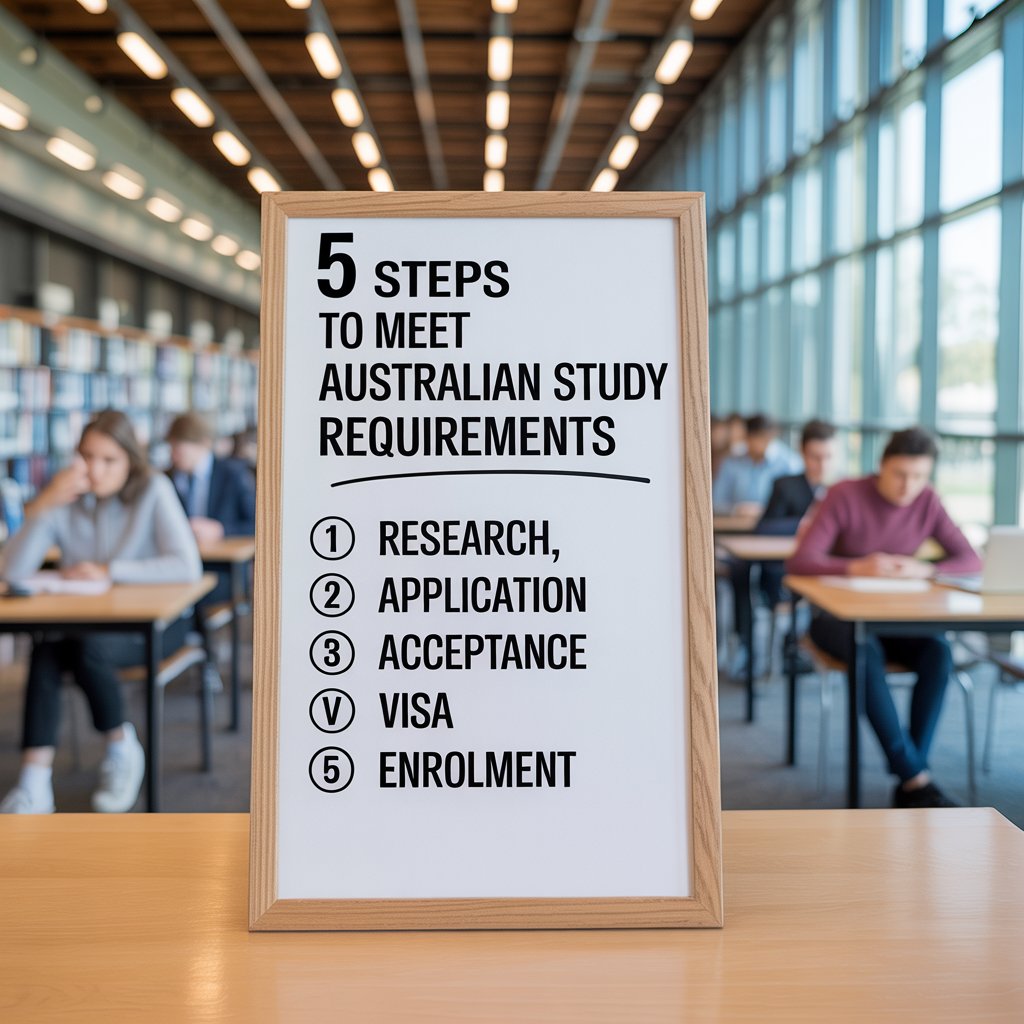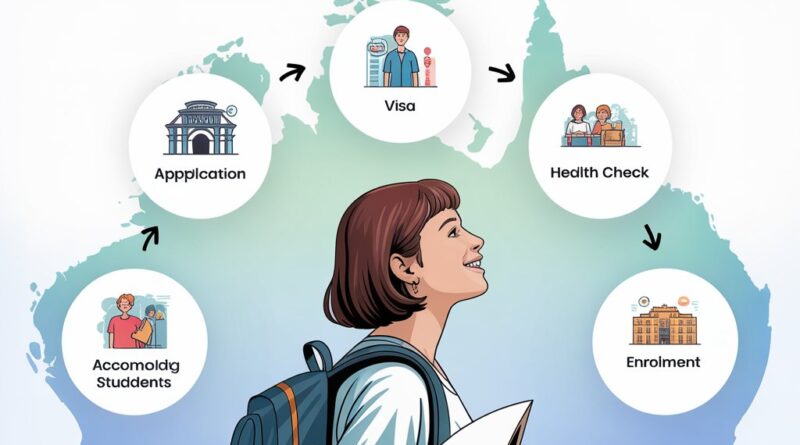5 Steps to Meet Australian Study Requirements
5 Steps to Meet Australian Study Requirements
Dreaming of studying in Australia? You’re not alone. With its world-class universities, diverse culture, and koalas (yes, real ones!), it’s no surprise international students flock there. But before packing your bags, there are a few important steps you need to take. Let’s break it down into five simple, stress-free stages.

Step 1 – Choose the Right Course and Institution
Understand Your Interests and Goals
Before you dive into applications, ask yourself: What do I actually want to study? Whether it’s engineering, nursing, business, or creative arts, make sure it aligns with your passion and career plans.
Use CRICOS for Course and Institution Verification
CRICOS (Commonwealth Register of Institutions and Courses for Overseas Students) is your best friend. It lists approved courses and schools for international students in Australia. Double-check every course there before applying.
Check Course Duration and Intakes
Most Australian institutions have two main intakes: February and July. Some offer additional intakes in November. Course durations vary, so make sure you know how long you’ll be staying.
Consider Regional Campuses for Extra Benefits
Studying in regional Australia can give you more points for permanent residency and a unique lifestyle experience. Plus, smaller class sizes and cheaper rent – win-win!
Step 2 – Meet the Academic and English Language Requirements
Academic Qualifications Needed
Every course has its own academic entry criteria. For undergraduate studies, you’ll need to complete the equivalent of Year 12. For postgraduate programs, a bachelor’s degree is usually required.
English Language Proficiency Tests
Australia needs to know you can keep up in English. That’s where language tests come in.
IELTS, TOEFL, PTE & Alternatives
- IELTS: Most accepted test. Scores range from 5.5 to 7.5 depending on the course.
- TOEFL iBT: Usually 60–100+.
- PTE Academic: Accepted widely now.
- Cambridge English (CAE): Sometimes accepted.
Minimum Scores by Course Type
- Diploma: IELTS 5.5 overall
- Bachelor’s Degree: IELTS 6.0–6.5
- Master’s Degree: IELTS 6.5–7.0
Pro tip: Always check the university website. Some courses (like nursing or law) need higher scores.
Step 3 – Gather Required Documents
Academic Transcripts and Certificates
Make sure they are certified copies, preferably translated into English if needed.
Passport and Identification
Ensure your passport is valid for at least six months beyond your intended stay.
Statement of Purpose (SOP)
This is your story. Be honest, personal, and specific about why you chose the course, the institution, and your future goals.
Letters of Recommendation (LORs)
Get these from teachers or employers who know your academic/professional strengths.
Step 4 – Apply for Your Student Visa (Subclass 500)
Now that you’re accepted – it’s time for the real deal: your visa.
Genuine Temporary Entrant (GTE) Requirement
This is a short written statement explaining your genuine intent to study and return after the course. Be clear and avoid sounding like you’re planning to stay permanently.
Proof of Financial Capacity
You must prove you can financially support yourself. This could be:
- Bank statements
- Loan letters
- Scholarships
Usually, AUD $24,505/year is considered the minimum for living expenses.
Health Insurance Requirements (OSHC)
You must purchase Overseas Student Health Cover (OSHC) before applying for your visa.
Biometrics and Health Check
Some applicants are required to provide biometrics and undergo medical checks. Your ImmiAccount will guide you through the process.
Step 5 – Prepare for Departure and Arrival
Book Flights and Accommodation Early
Flights can get expensive closer to departure dates. Also, arrange at least temporary housing before landing.
Get Travel Insurance
It’s optional but highly recommended. You never know when flight delays or lost luggage might ruin your day.
Understand Your Rights and Responsibilities
Every student in Australia has rights – to safety, to be treated fairly, and to work under legal standards. Learn about your rights on the Study in Australia website.
Attend Pre-Departure Briefings (Optional but Helpful)
Many universities and education agents offer online or in-person briefings. Great for learning about Aussie culture, money tips, and what to pack!
Common Mistakes to Avoid
Ignoring English Language Requirements
Some students underestimate this. One small mistake here, and boom – application denied.
Submitting Incomplete Documentation
If you miss even one document, it can delay your admission or visa. Use a checklist!
Tips for a Smooth Study Journey in Australia
Join Student Communities
It helps to make friends early. Join clubs, Facebook groups, or campus communities.
Use Student Support Services
Got culture shock? Academic stress? Your campus has counselors and support teams. Use them!
Part-Time Work Opportunities
With your visa, you can work up to 48 hours per fortnight during semester and unlimited during breaks. Jobs in retail, hospitality, or campus roles are great starters.
🎓 Conclusion
Studying in Australia is exciting – but it’s also a process that requires attention to detail. From choosing your course to landing on Aussie soil, each step matters. Take your time, stay organized, and ask for help when needed. Before you know it, you’ll be exploring kangaroo country with a student ID in hand. Good luck, future Aussie scholar!
FAQs
1. What is the minimum IELTS score required for Australian study?
It depends on the course. Most bachelor’s programs require at least 6.0, while master’s may require 6.5 or more.
2. Can I work while studying in Australia?
Yes! You can work up to 48 hours per fortnight during classes and full-time during breaks.
3. Is it possible to switch courses or institutions after arrival?
Yes, but you must follow proper procedures and inform the Department of Home Affairs. Don’t do it without guidance.
4. How long does visa processing usually take?
It varies. On average, 1 to 3 months. Apply early to be safe.
5. Do I need health insurance even if I’m healthy?
Yes, it’s mandatory. You must have OSHC (Overseas Student Health Cover) for your entire stay.



